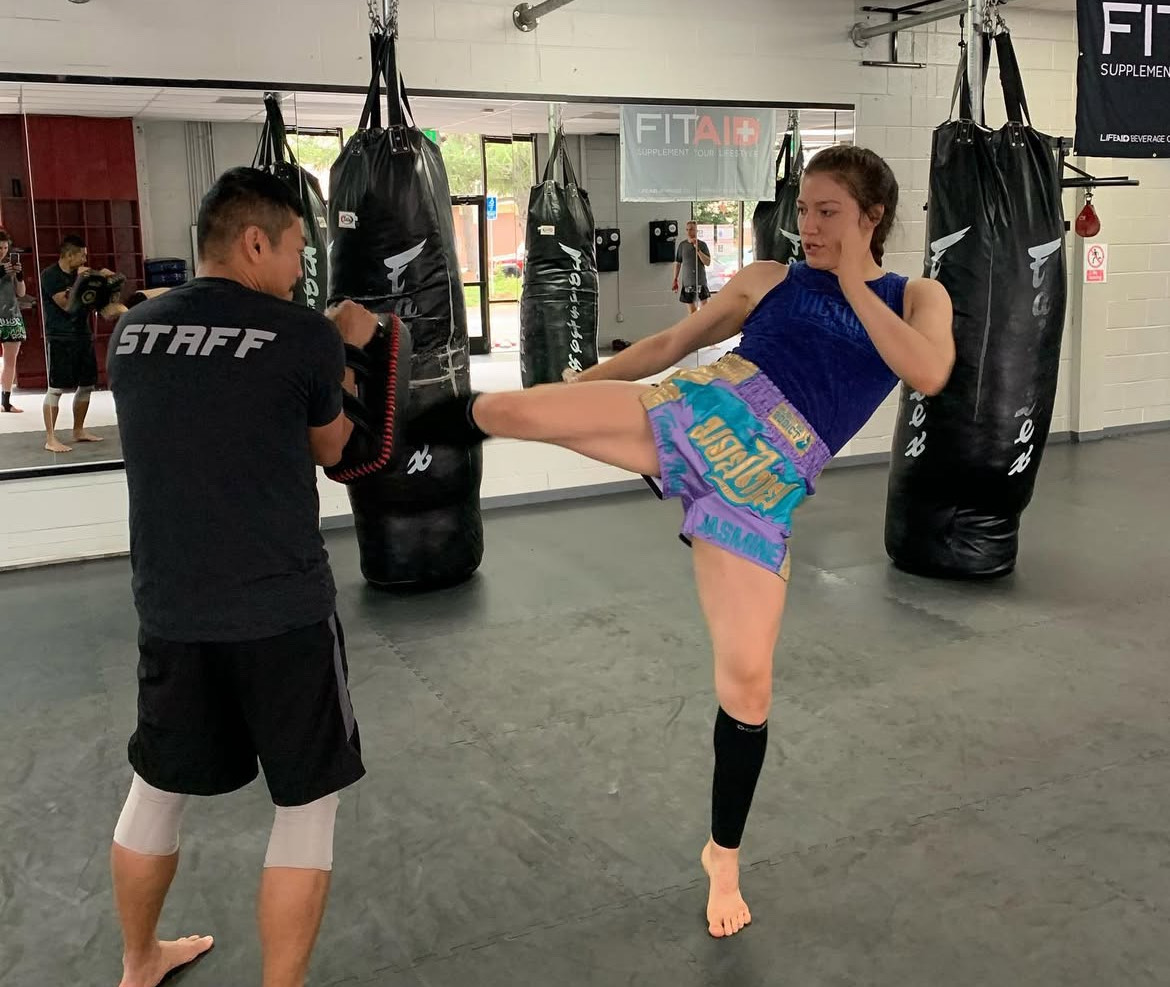Not to be mistaken for a typo in a cocktail menu listing, Muay Thai, also known as the art of eight limbs, is a form of kickboxing deeply ingrained in Thailand’s culture, history and national identity.
Since the seventh century, Muay Thai has been a vital tool for self-defense, discipline and survival, utilizing eight body parts — the fists, elbows, knees and shins. Now, thousands of gyms and training camps are bustling with students and future prize fighters around the world.
Originating in the military training of ancient Siamese soldiers, Muay Thai began as a combat system to defend against foreign aggressors attempting to invade Thailand.
Over time, Muay Thai grew beyond a fighting style, becoming a form of art and spiritual expression. Muay Thai fighter Amorndet Ranjanthuek, also known as Anh Fairtex, trains aspiring fighters in the Bay Area.
“I require my students to perform the Wai Kru (a Thai ritual that involves showing respect to teachers, trainers and other mentors) before a bout,” Fairtex said. “Muay Thai is an intense physical activity, but it is also a mental and emotional practice.”
In addition to Thai culture, Muay Thai is linked to Thailand’s socioeconomic realities. For more than half a million Thai children, fighting in the ring is not just about passion or pursuit of honor — it is a means of survival. In rural areas of Thailand, children from low-income families start training in Muay Thai as early as 6 or 7 years old.
Fueled by financial hardship, many children are encouraged, sometimes pressured, by their parents to join local gyms, train relentlessly every day and become skillful enough to fight in amateur bouts for cash awards. Fairtex, one of four children from a farming family outside of Bangkok, first stepped into the ring as a 6-year-old, suffering a deep laceration above his right eye before fighting two more times the same night.
“I won the fight and got paid 25 baht,” Fairtex said. “We needed money for food, so I had to keep fighting.”
In some cases, children competing in Muay Thai rise through the ranks, achieving celebrity status while accumulating wealth and lucrative sponsorships along the way. Some may eventually transition into professional careers and reap significant purses from major fights. For underprivileged Thais, the financial appeal of Muay Thai is difficult to resist.
Muay Thai has gradually achieved global reach over the past three decades, especially in the West. With the birth of crossover athletes in the late 1990s, western fighters sought more dynamic techniques to advance their striking skills. Muay Thai’s focus on clinching, elbow strikes, knee strikes and low leg kicks quickly made it a favorite among practitioners of other combat sports like kickboxing and mixed martial arts.
Scott Coker, a kickboxing and MMA promoter, said Muay Thai is a pivotal skill to have.
“As a lifelong martial artist, I appreciate the importance of Muay Thai in the fight industry,” Coker said. “Because of its sheer excitement, Muay Thai has captured the imagination of Western fans. The fights are thrilling spectacles because they’re fast-paced, brutal and technical. MMA has proven that professional fighters can’t rely solely on wrestling and jiujitsu. They also need to have a standup striking art like Muay Thai.”
Coker was the force behind Strikeforce, a leading MMA promotion company acquired by the UFC in a deal considered to be the highest-profile sports and entertainment transaction in 2011. The UFC pursued Strikeforce because of its deep bench of superstars, many of whom were elite strikers with a Muay Thai base.
“My fighters elevated the sophistication of the UFC’s roster,” Coker said. “Within a year, Strikeforce contenders won four UFC belts, demonstrating that Strikeforce athletes were better than the UFC’s.”
Coker most recently held the reins of Bellator MMA which was sold to the Professional Fighters League last year. At Bellator, he continued to nurture exciting fighters like Usman Nurmagomedov, Michael Chandler, Patricio Pitbull, Michael ‘Venom’ Page, Fedor Emelianenko and Gegard Mousasi. Muay Thai has amassed a significant following in the United States, Canada and Europe too. Training camps and gyms specializing in Muay Thai attract enthusiasts interested in fitness, self-defense and combat sports. MMA trainer Javier Mendez said Muay Thai’s footprint is conspicuous in the modern evolution of MMA as fighters incorporate its techniques into their arsenal to gain a competitive edge.
“Cross-training Muay Thai with other martial arts disciplines has created a new generation of fighters who are as skilled standing up as they are on the ground,” Mendez said.
Given Muay Thai’s skyrocketing popularity, martial arts influencers in the West have a unique platform to raise awareness about the challenges faced by Thai children who are required to fight their way out of poverty. We need to use our voices to advocate for policy reforms that prevent vulnerable children from being exploited in the ring. Let’s not forget that Muay Thai was initially created to protect the people of Thailand and is a crucial part of its history and culture.



Anh Fairtex • Mar 5, 2025 at 10:24 pm
Awesome Kane! You have been my great student for the past 12 years and now you are an ambassador for our sport!